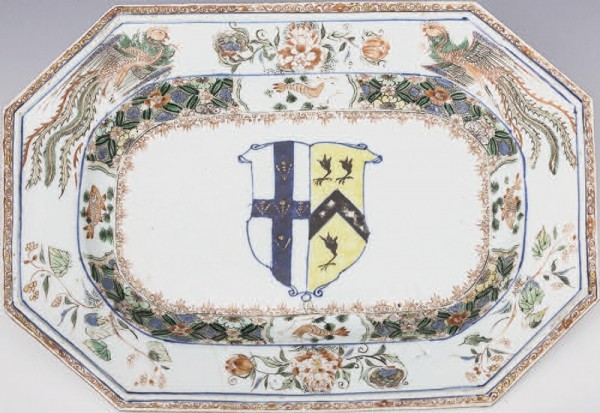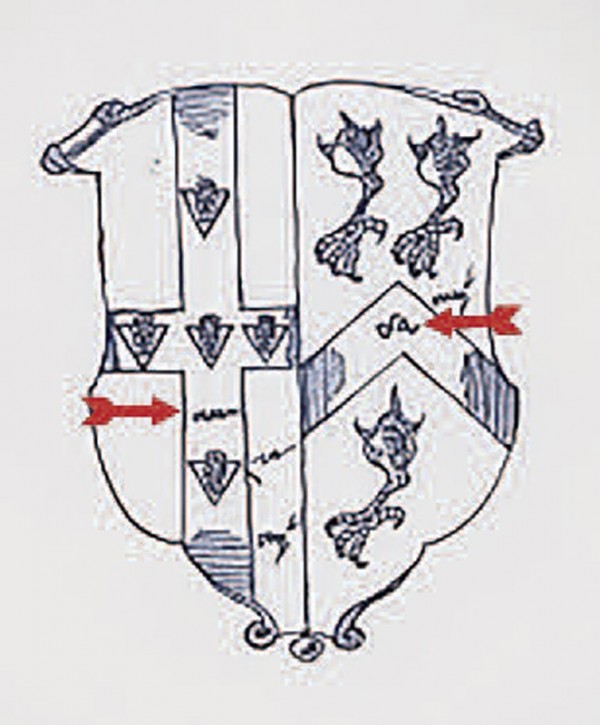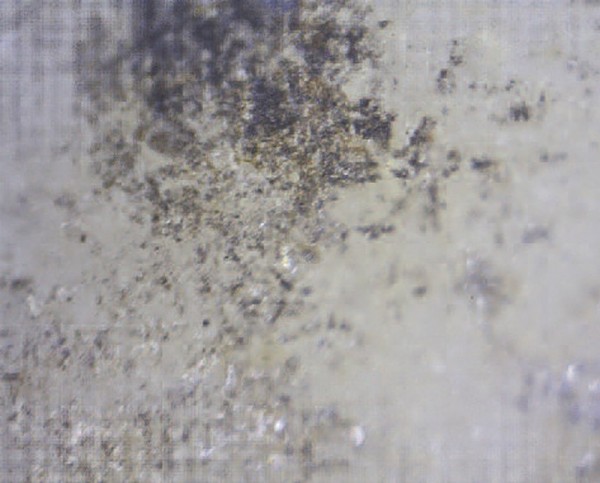
Dish (one of a pair), China, 1715. Porcelain. L. 12 1/2". (Private collection; photo, Thomas M. Mueller.) Famille verte enamel decoration with the arms of Edward Harrison (1674–1732) and his wife, Frances Bray (1674–1752). This armorial dish shows no visible gold or silver application except for the five golden arrowheads on the cross on the left side of the armorial.

Dish (one of a pair), China, 1715. Porcelain with visible gold and silver application. L. 12". (Courtesy of the late Khalil Rizk of the Chinese Porcelain Company; photo, Chinese Porcelain Company.)

Armorial drawing of the first Harrison and Bray service ordered prior to 1715. Adapted from Clare Le Corbeiller and Alice Cooney Frelinghuysen, “Chinese Export Porcelain,” The Metropolitan Museum of Art Bulletin 60, no. 3 (2003): 18.

Vestiges of gold identified using Intensive Surface Analysis on the dish illustrated in fig. 1. (Photo, Matthew Bunney and Shirley M. Mueller.)

Vestiges of silver identified using Intensive Surface Analysis on the dish illustrated in fig. 1. (Photo, Matthew Bunney and Shirley M. Mueller)
